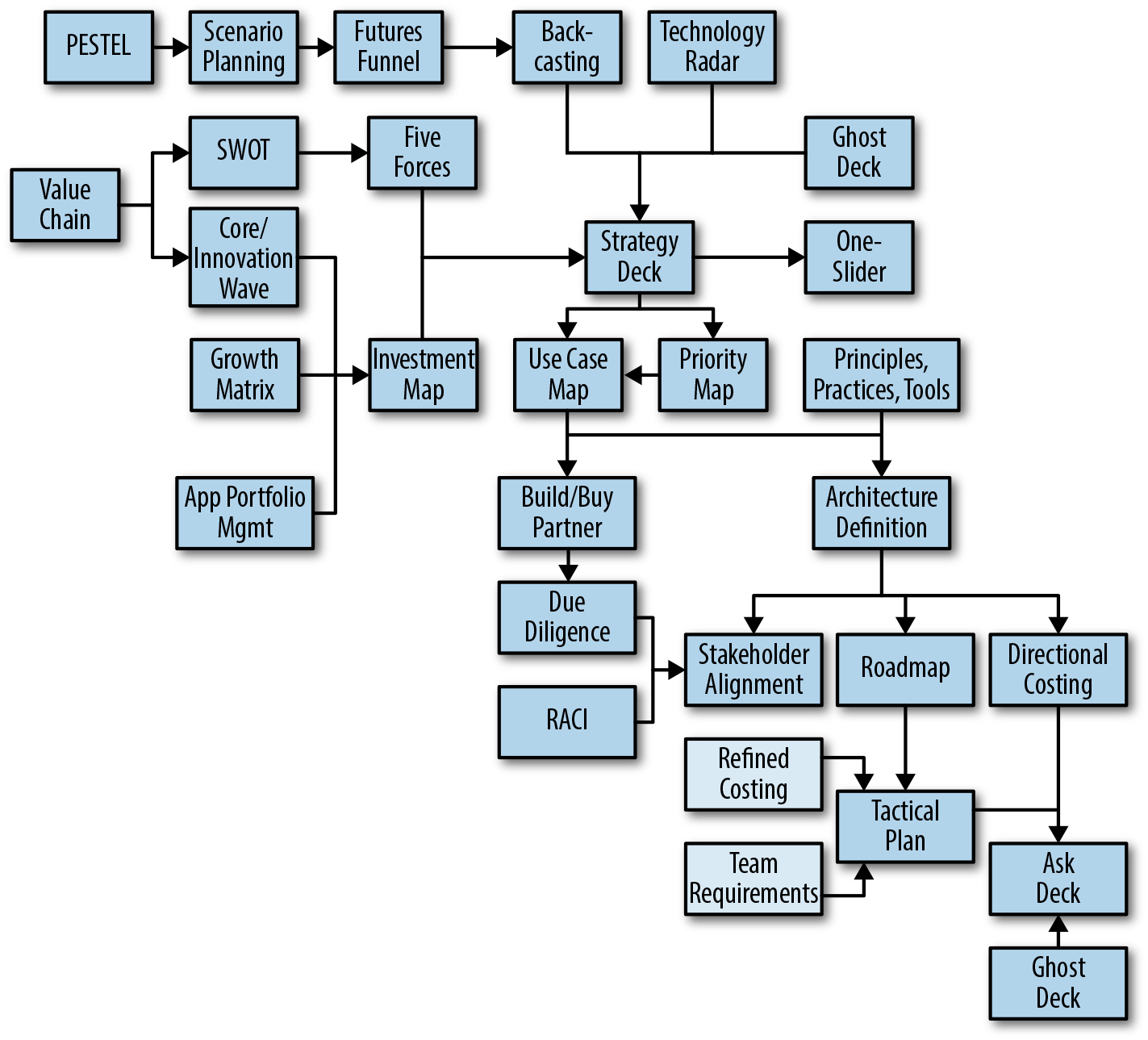Chapter 10. Bringing It All Together
Patterns Map
This completes the discussion of our 39 patterns. Now that you have a good understanding of each individual pattern, let’s look at them all (well, all the creation and communication patterns, anyway) together in a map. When viewed all at once, the patterns in this book are devised to work on three levels:
- Individually
-
For many of the patterns, you can just implement one pattern on its own and get real value from it. The Architecture Definition (see “Architecture Definition”) is a great example of this; you can write an architecture for a specific new project you’re undertaking, and that would be very useful on its own. And in a different context, the SWOT (see “SWOT”), Technology Radar (see “Technology Radar”), and APM (“Application Portfolio Management”) are great to use alone too, depending on your need and your audience. So feel free to do that. On the other hand, some of them, such as the Investment Map, might not be as fully realized if approached in a vacuum. And then there is no value really in doing a Ghost Deck (see “Ghost Deck”) by itself—its value is in helping structure the other kinds of major decks, such as the Strategy Deck and Ask Deck (so that’s why it’s represented twice in Figure 10-1).

Figure 10-1. How all the patterns fit and flow together
- In clusters
-
You can alternatively use several patterns together ...
Get Technology Strategy Patterns now with the O’Reilly learning platform.
O’Reilly members experience books, live events, courses curated by job role, and more from O’Reilly and nearly 200 top publishers.

